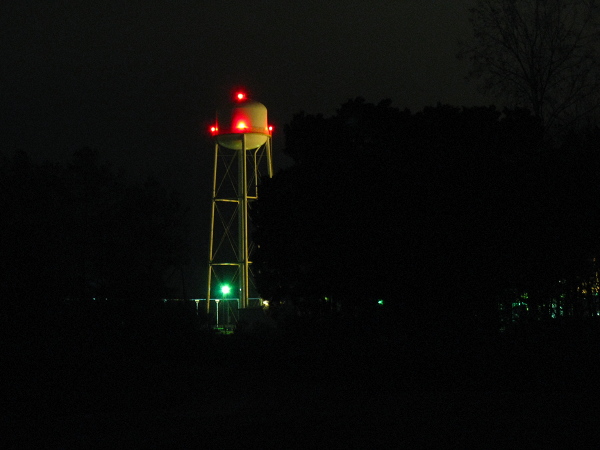Friday, November 28, 2008 - Foscue Creek Park, Demopolis AL
< previous day | archives | next day >

Lighted Hexion water tower from Foscue Creek Park, Nov 28, 2008
I need a tripod
On my walk last night I saw several interesting photo opportunities I wanted to see if I could capture. Lights reflecting off the water. Trees silhouetted against the night sky. Views of the Hexion Specialty Chemicals plant next door. Stuff like that. But I got frustrated trying to locate stationary objects to use as a steady rest for long exposures - they just weren't where I wanted them. I guess that's what tripods are for.
Night camp
Site 37 - Foscue Creek Campground, Demopolis AL
- This is a well maintained US Army Corps of Engineers campground with level paved sites, most with full hookups
- Many sites overlook the water of the inlets off Demopolis Lake on the Tombigbee River
- There is good biking on the park roads
- The campground is pretty full Thanksgiving week and is generally booked solid the weekend of the Demopolis Christmas on the River festival in early December.
- Poor Verizon cell phone service - access is via Extended Network, roaming
- No Verizon EVDO service - access is via the Extended Network and service varies is slow but reliable
- Only 3 miles to Wal-Mart and other services in Demopolis AL
- Find other references to Foscue Creek
- List the nights I've camped here
- Check the weather
- Reserve a site
- Get a map
Fire Protection in Early Hudson NY
In July, 1785, "Chimney Viewers" were appointed, and many regulations were established for the protection of the city, and for the prevention of fires.